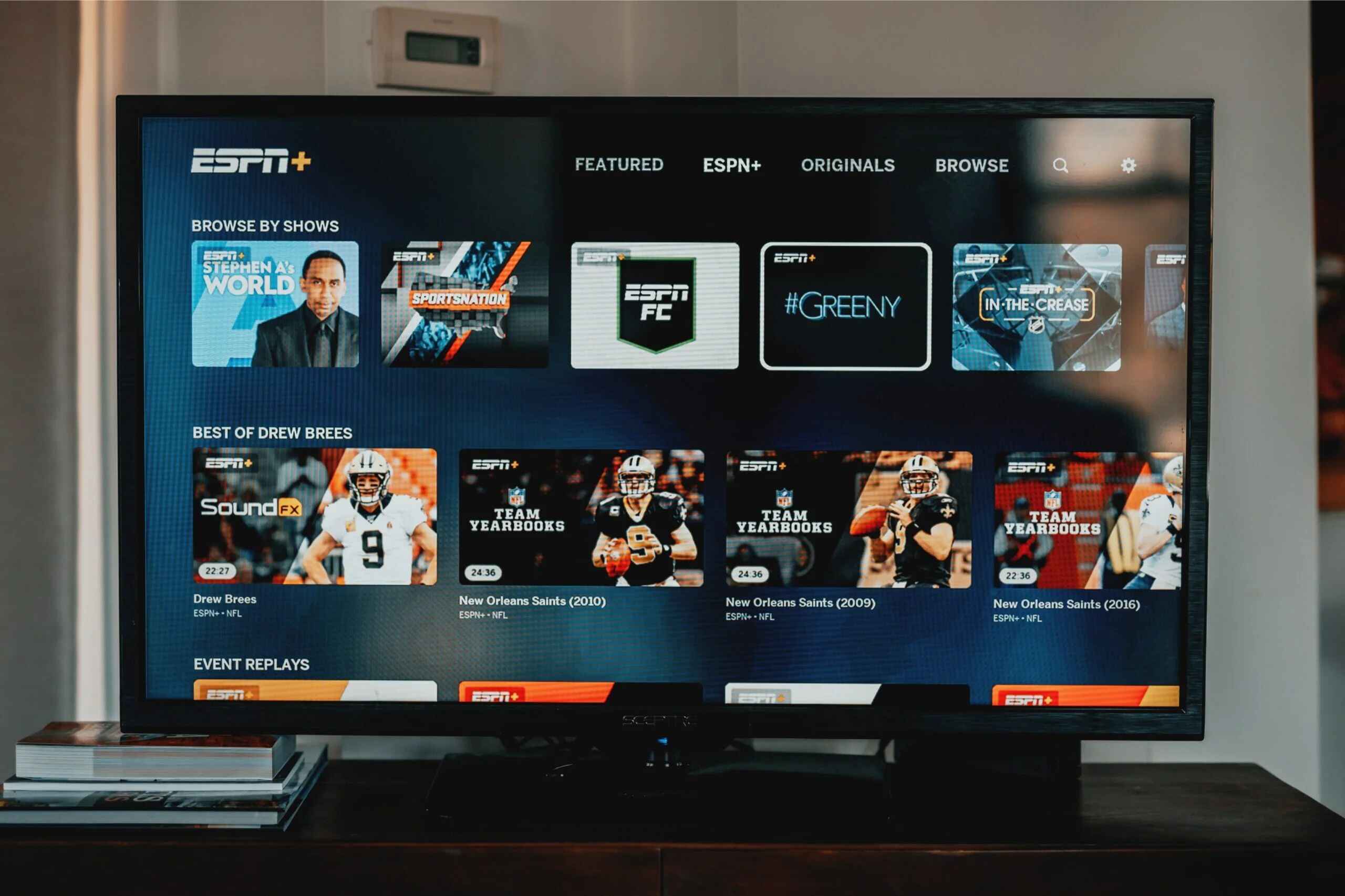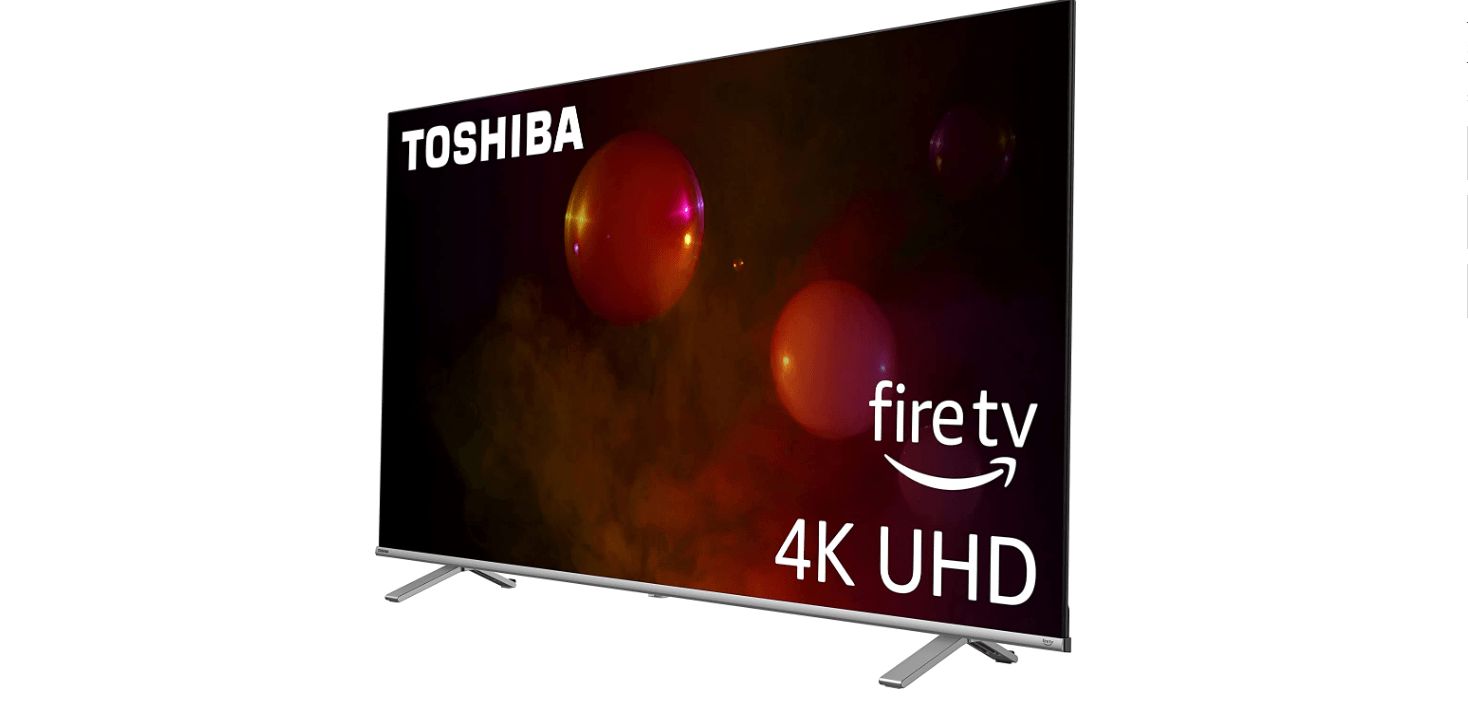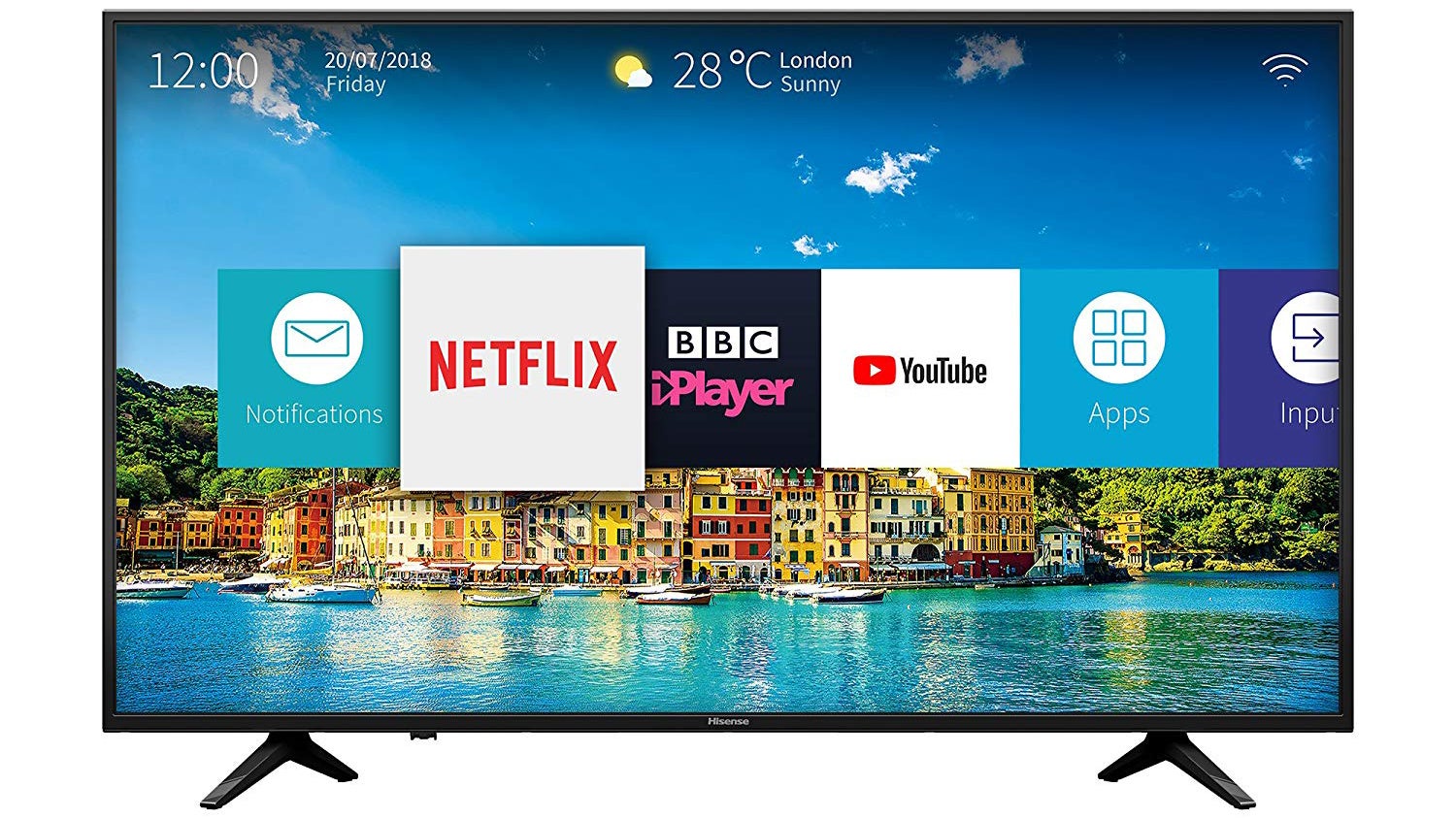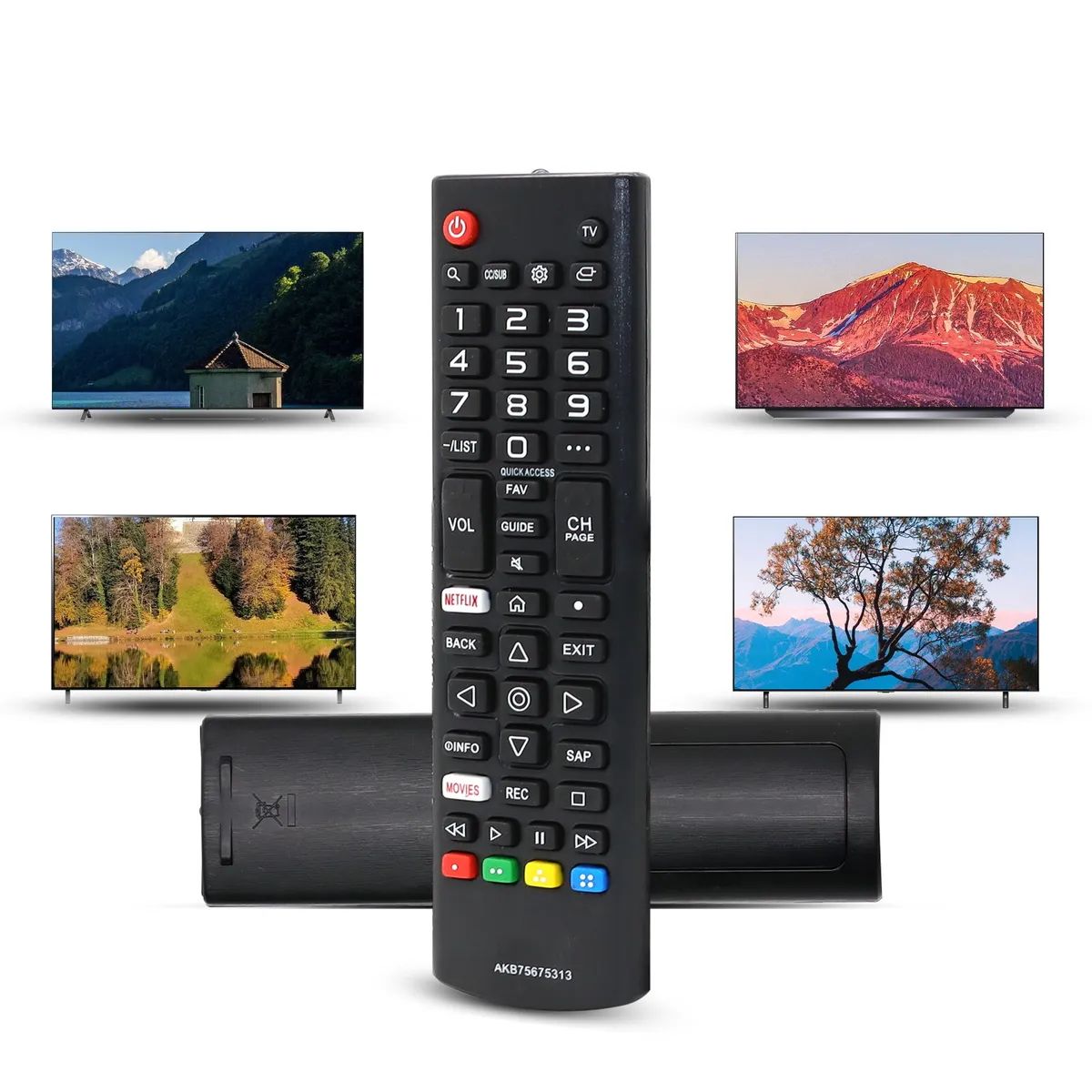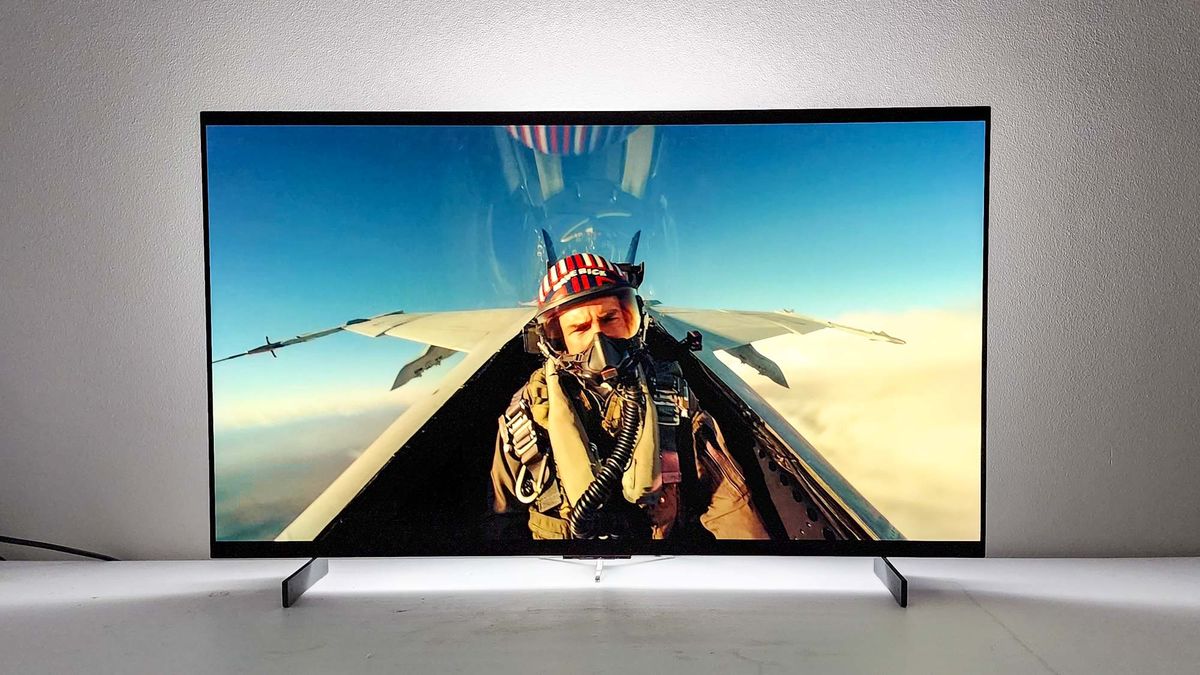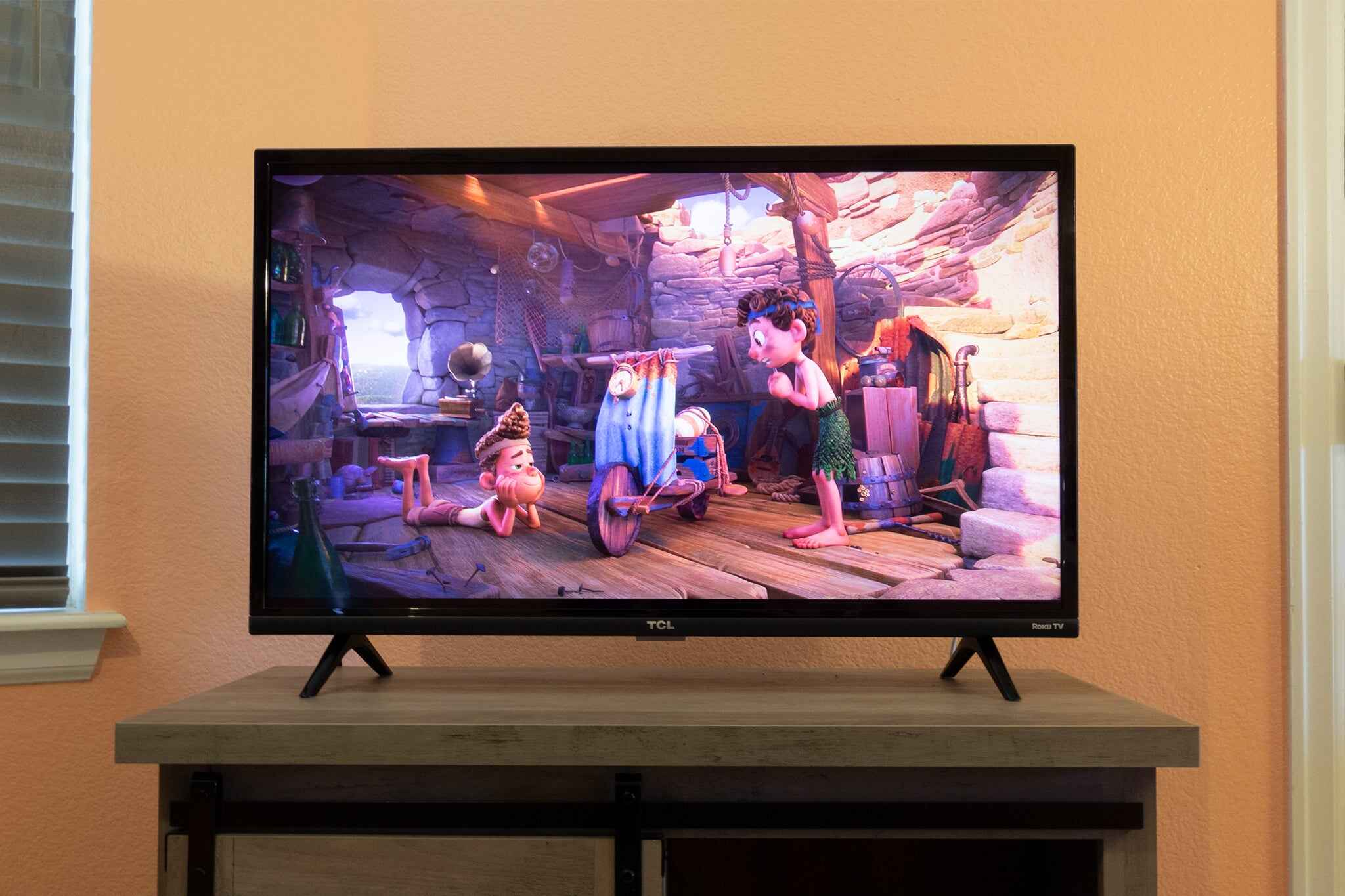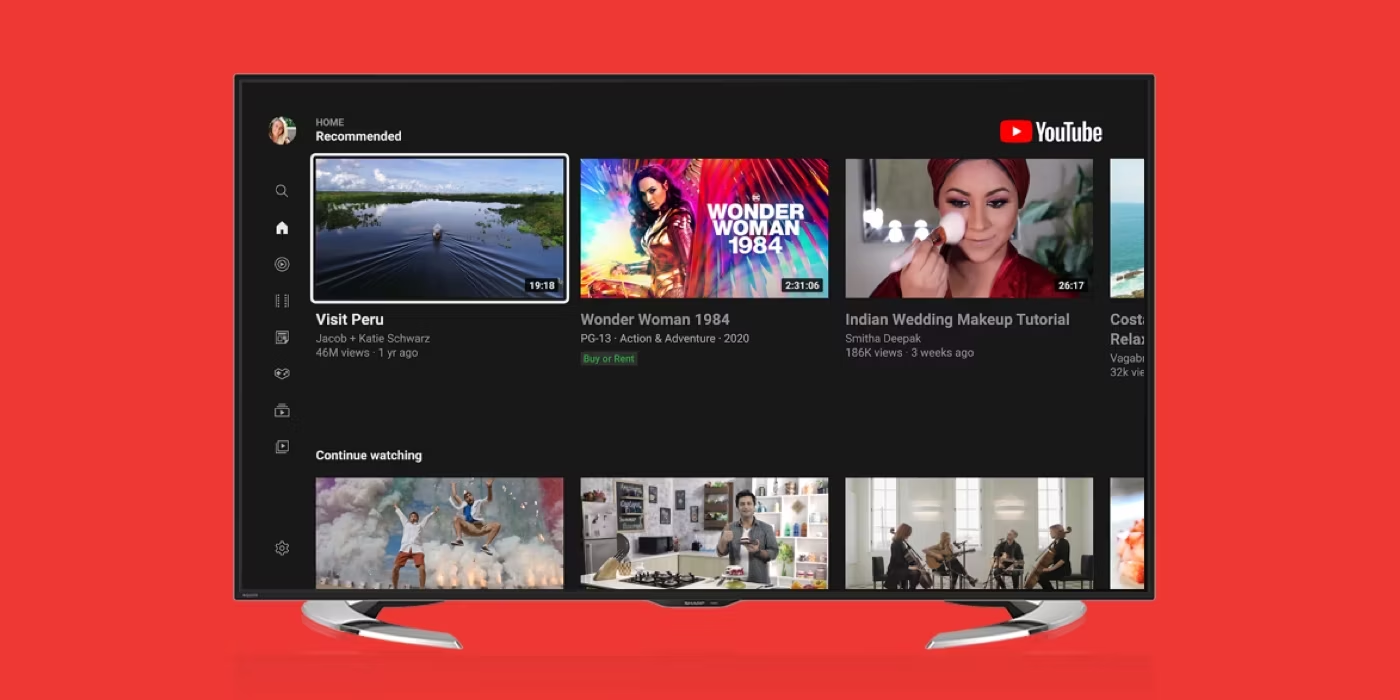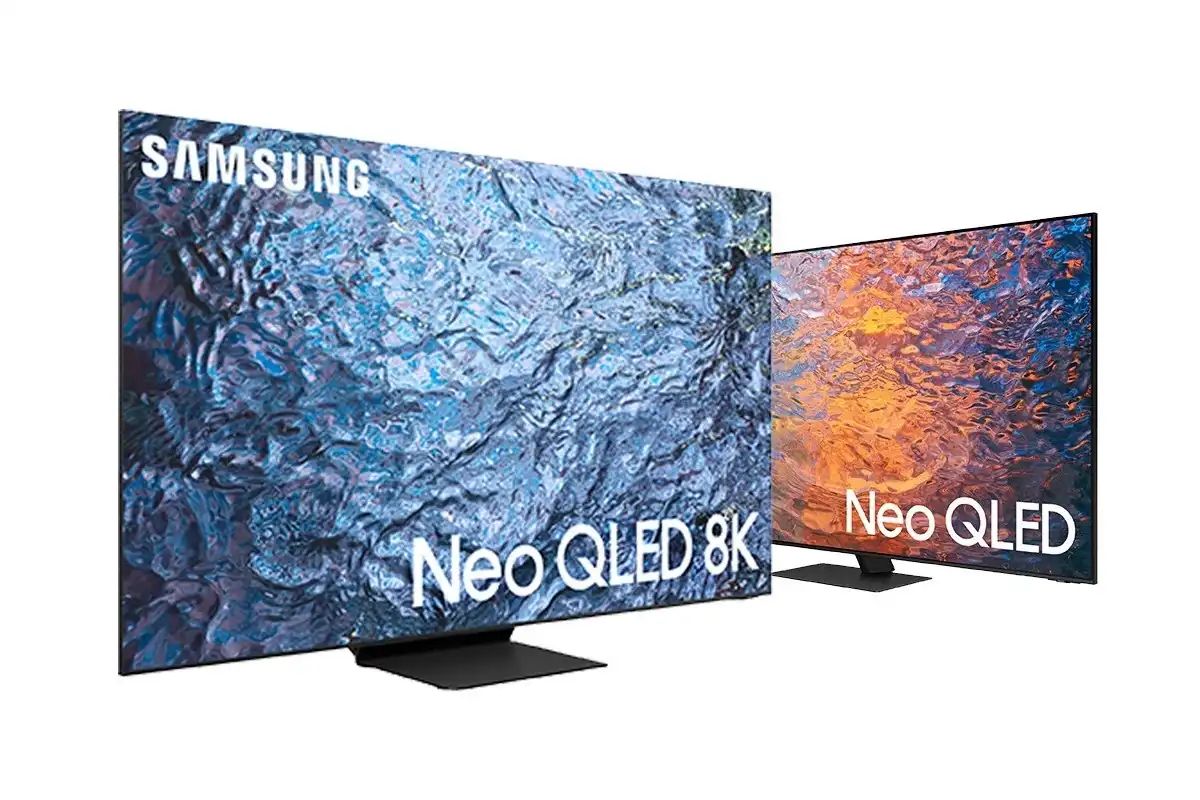Introduction
The advancement of technology has revolutionized the way we consume media. Gone are the days when televisions were limited to broadcasting cable or satellite channels. With the emergence of Smart TVs, the concept of television has taken on a whole new meaning. Smart TVs have become a popular choice for entertainment enthusiasts, providing a seamless integration of traditional television features with the power of the internet.
A Smart TV, also known as a connected TV, is a television set with built-in internet connectivity. It combines the features of a traditional television with the capabilities of a computer, enabling users to access a wide range of online content, stream videos, play games, browse the internet, and much more.
The convenience and versatility of a Smart TV have made it a must-have device for modern households. It offers a host of features that enhance the entertainment experience and provide access to an extensive array of content.
In this article, we will explore the exciting features and functionalities of Smart TVs, highlighting why they have become a popular choice for consumers worldwide.
What is a Smart TV?
A Smart TV is a television that is equipped with internet connectivity and integrated digital content services. It combines the features of a traditional TV with online capabilities, allowing users to access a wide range of content from streaming platforms, apps, and websites. Smart TVs offer an interactive and connected experience, transforming the way we watch and engage with media.
Unlike regular TVs, Smart TVs have built-in Wi-Fi or Ethernet connectivity, enabling them to connect to the internet without the need for additional devices. They come equipped with an operating system that provides a user-friendly interface for seamless navigation across various functions and content sources. This eliminates the need for external streaming devices like media players or game consoles.
Smart TVs offer a multitude of features that enhance the viewing experience. They support high-resolution displays, such as 4K and HDR, delivering crisp and vibrant visuals. Many models also come with advanced audio technologies, immersing users in a surround sound experience.
With a Smart TV, users can access a plethora of online content. Streaming services like Netflix, Amazon Prime Video, and Hulu can be directly accessed through dedicated apps on the TV’s interface. Users can enjoy their favorite movies, TV shows, and documentaries without the need for a separate streaming device.
Besides streaming services, Smart TVs provide access to a wide range of apps and websites. Whether you want to browse social media, play online games, or catch up on news and sports, Smart TVs have you covered. The availability of an app store allows users to download and install additional apps to further customize their viewing experience.
Furthermore, Smart TVs often come with advanced connectivity options. They have multiple HDMI and USB ports for connecting external devices like gaming consoles, Blu-ray players, and sound systems. Some models even support Bluetooth and wireless screen mirroring, allowing users to effortlessly connect their smartphones or laptops to the TV.
Features of a Smart TV
Smart TVs offer a wide range of features that enhance the entertainment experience and provide users with a plethora of options. Here are some key features of Smart TVs:
- Online Content Streaming: One of the main features of a Smart TV is the ability to stream online content. Users can access popular streaming platforms and services like Netflix, Hulu, and Amazon Prime Video directly through the TV’s interface. This allows for a seamless viewing experience without the need for additional devices.
- Gaming: Smart TVs have evolved to become gaming consoles in their own right. Many models come with pre-installed gaming apps or support the download of gaming apps from an app store. With the addition of a gamepad or smartphone as a controller, users can enjoy a wide variety of games on the big screen.
- Internet Browsing: Smart TVs provide internet browsing capabilities, allowing users to surf the web from the comfort of their living room. Whether it’s checking emails, reading articles, or browsing social media, the TV’s larger screen makes for a more immersive browsing experience.
- Voice Control and Virtual Assistants: Some Smart TVs come with voice control features or integrated virtual assistants like Amazon Alexa or Google Assistant. This enables users to control the TV through voice commands, search for content, adjust settings, and even control other smart home devices.
- Screen Mirroring and Casting: Smart TVs allow users to mirror or cast content from their smartphones, tablets, or laptops directly onto the TV screen. This makes it convenient for sharing photos, videos, or presentations with friends and family or for seamlessly switching from small screens to a larger display.
- Smart Home Integration: With the rise of smart home technology, Smart TVs have become a central hub for controlling and integrating various smart devices. Users can connect and control their smart lights, thermostats, cameras, and more, all from the convenience of their Smart TV.
- Enhanced User Experience: Smart TVs offer a user-friendly interface that makes navigation easy and intuitive. With features like customizable home screens, personalized recommendations, and advanced search functionality, users can quickly find and access their favorite content.
These are just a few of the many features that make Smart TVs a worthwhile investment. With their versatility and connectivity, they have transformed the way we consume media in the modern era.
Streaming and Online Content
One of the key features that sets Smart TVs apart from traditional televisions is their ability to stream online content. Smart TVs provide users with access to a vast library of movies, TV shows, documentaries, and more, right at their fingertips.
With the emergence of popular streaming platforms such as Netflix, Hulu, Amazon Prime Video, and Disney+, Smart TVs have become the go-to devices for binge-watching enthusiasts. These platforms offer thousands of hours of content across various genres, ranging from the latest blockbuster movies to critically acclaimed TV series.
Using the dedicated apps or built-in features of Smart TVs, users can easily navigate through their favorite streaming services. The intuitive interface allows for seamless browsing and searching, while personalized recommendations help users discover new content based on their preferences and viewing history.
In addition to well-known streaming platforms, Smart TVs also offer access to a wide range of other online content. Users can stream videos from popular platforms like YouTube, Vimeo, and Dailymotion, watch live TV through streaming services like Sling TV or YouTube TV, and even access free, ad-supported streaming services like Tubi or Pluto TV.
Smart TVs also provide access to online music streaming services such as Spotify, Pandora, and Apple Music. Users can enjoy their favorite playlists and discover new artists directly through their TV’s interface, eliminating the need for additional devices or audio systems.
In recent years, Smart TVs have increasingly focused on providing original content. Many manufacturers have launched their own streaming platforms, offering exclusive shows and movies tailored to their users. This further enhances the variety of content available, ensuring that users always have something new to watch.
In addition to streaming services, Smart TVs often allow for easy screen mirroring. Users can mirror the screen of their smartphones, tablets, or laptops onto the TV, enabling them to watch videos, view photos, or even play mobile games on the larger screen.
With the advancements in internet connectivity and streaming technology, Smart TVs have become the ultimate entertainment hub for accessing online content and staying up-to-date with the latest in the world of streaming media.
Gaming on a Smart TV
Smart TVs have evolved to become more than just devices for watching movies and TV shows. They now offer gaming capabilities that provide users with a thrilling and immersive gaming experience.
With the proliferation of gaming apps and platforms, Smart TVs have become a popular choice for casual and even hardcore gamers. Many Smart TVs come equipped with pre-installed gaming apps, while others provide access to an app store where users can download a wide variety of games.
Smart TVs offer a larger screen experience, making gaming more engaging and enjoyable. The vivid and high-resolution displays, coupled with advanced image processing technologies, deliver stunning visuals and smooth gameplay.
Users also have the option to connect external gaming devices such as consoles or controllers to their Smart TV, enhancing the gaming experience even further. This allows for seamless integration with popular gaming consoles like PlayStation or Xbox.
Moreover, Smart TVs with gaming capabilities often feature low input lag, ensuring minimal delay between the user’s actions and the on-screen response. This is crucial for games that require quick reflexes and precision.
Another advantage of gaming on a Smart TV is the ability to play multiplayer games with friends and family. With the TV’s larger screen, several people can gather around and participate in multiplayer gaming sessions. This not only adds to the fun but also strengthens social connections.
Furthermore, Smart TVs with Smart Home Integration features can enhance the gaming experience by synchronizing the TV with compatible lighting systems. This creates ambient lighting effects that complement the on-screen action, adding an extra layer of immersion to gaming sessions.
Smart TVs also offer the convenience of playing mobile games on a larger screen. Users can mirror the screen of their smartphones or tablets onto the TV, allowing them to enjoy their favorite mobile games with a more expansive view.
Given their versatility and advanced features, Smart TVs have become a go-to choice for gamers of all levels. Whether it’s casual gaming or competitive multiplayer battles, the gaming capabilities of Smart TVs make them a versatile entertainment device for both gamers and non-gamers alike.
Internet Browsing
In addition to streaming and gaming capabilities, Smart TVs offer the convenience of internet browsing directly from your living room. This feature allows users to access the internet and browse their favorite websites on the big screen, providing a more immersive browsing experience.
Smart TVs come equipped with web browsers that have been optimized for TV screens, making it easy to navigate through websites using the TV’s remote control. Some models even support wireless keyboards or mice, allowing for faster and more efficient browsing.
Internet browsing on a Smart TV opens up a world of possibilities. Users can stay up-to-date with the latest news, browse social media, stream online videos, read articles, and even shop online – all from the comfort of their couch.
Many Smart TVs also support multiple tabs, allowing users to open and switch between different websites seamlessly. This makes it convenient for multitasking, such as checking emails while watching a movie or keeping up with live scores during a sports event.
Smart TVs with internet browsing capabilities often offer bookmarking and history features, allowing users to save their favorite websites for easy access and revisit pages they have previously viewed. This saves time typing in URLs and makes it easy to find and revisit websites.
Moreover, Smart TVs with internet browsing can also sync with other devices, such as smartphones or tablets, allowing users to pick up where they left off and continue browsing on the TV screen.
However, it’s worth mentioning that internet browsing on a Smart TV may not provide the same level of convenience and speed as browsing on a computer or smartphone. The navigation may feel slower due to natural limitations of using a remote control or on-screen keyboard.
Nevertheless, having internet browsing capabilities on a Smart TV expands the range of activities that can be performed from the comfort of your living room. Whether it’s staying connected on social media, watching online videos, or simply exploring the web, Smart TVs provide an all-in-one entertainment solution.
Voice Control and Virtual Assistants
Smart TVs have become more intuitive and user-friendly with the integration of voice control and virtual assistants. This feature allows users to control their Smart TVs using voice commands and access a wide range of functions, transforming the way we interact with our televisions.
Many Smart TVs come equipped with built-in virtual assistants such as Amazon Alexa, Google Assistant, or Apple Siri. Users can simply use voice commands to turn on the TV, change channels, adjust volume, search for content, and perform various other functions without even picking up the remote control.
Voice control on Smart TVs provides a hands-free experience, making it easy to navigate through menus, launch apps, and control other smart home devices connected to the TV. Users can ask their virtual assistant to play a specific TV show, dim the lights, or even adjust the thermostat – all from the comfort of their couch.
Virtual assistants can also provide personalized recommendations based on user preferences and viewing history. Users can ask for movie recommendations, search for specific genres, or get information about their favorite actors or directors. The integration of artificial intelligence and machine learning in virtual assistants ensures that the TV understands the user’s preferences and delivers tailored content suggestions.
Furthermore, virtual assistants on Smart TVs can perform a wide array of tasks beyond TV control. Users can check the weather, get news updates, set reminders, and even ask general knowledge questions – all through voice commands. This adds to the convenience and versatility of Smart TVs as central command hubs within our homes.
Voice control and virtual assistants are continuously evolving, with manufacturers constantly improving the capabilities and compatibility of their offerings. Some Smart TVs even support multiple virtual assistants, giving users the flexibility to choose their preferred voice control system.
It’s important to note that voice control and virtual assistant features may vary depending on the brand and model of your Smart TV. Before purchasing a Smart TV for voice control, it’s worth researching the available options and ensuring compatibility with your preferred virtual assistant.
Overall, the inclusion of voice control and virtual assistants in Smart TVs not only enhances the user experience but also adds convenience and simplicity to the way we interact with our televisions and other connected devices, creating a more integrated and seamless home entertainment environment.
Screen Mirroring and Casting
Screen mirroring and casting are powerful features that Smart TVs offer, allowing users to mirror or cast content from other devices onto the TV screen. This functionality expands the possibilities of entertainment by enabling users to enjoy their favorite content on a larger display.
Screen mirroring allows users to mirror the screen of their smartphones, tablets, or laptops onto the Smart TV. This means that whatever is on the screen of the mobile device or computer can be wirelessly displayed on the TV, creating a more immersive viewing experience.
By simply connecting to the same Wi-Fi network, users can easily mirror their device onto the Smart TV without the need for any additional cables. This makes it convenient for sharing photos, videos, and presentations with a larger audience, such as friends or family members.
In addition, screen mirroring allows users to play mobile games on the TV screen, using the smartphone or tablet as a controller. This enhances the gaming experience by providing a larger display and a more comfortable and immersive environment.
Casting, on the other hand, allows users to stream content from compatible apps and services directly to the Smart TV. Apps like YouTube, Netflix, and Spotify often support casting, allowing users to select a video or playlist on their smartphone and play it on the TV with a simple tap of a button.
The content is streamed directly through the internet from the app or service to the Smart TV, bypassing the need for a separate device. Users can continue using their smartphone or tablet for other tasks while the content streams on the TV, providing a seamless and user-friendly experience.
Screen mirroring and casting are particularly useful for sharing memories from vacations or special events, watching home videos, or enjoying content from your preferred streaming services on a larger screen. It eliminates the need for gathering around a small device or passing it around, ensuring that everyone can comfortably enjoy the content.
Furthermore, Smart TVs often support multiple casting standards such as Chromecast, Miracast, or AirPlay, ensuring compatibility with a wide range of devices and operating systems. This allows users with different devices, whether it’s an Android, iOS, or Windows device, to easily connect and cast their content to the Smart TV.
Overall, screen mirroring and casting features on Smart TVs provide flexibility, convenience, and an enhanced viewing experience. Whether it’s sharing photos, playing games, or streaming content, these features bridge the gap between devices and allow for a more enjoyable entertainment experience.
Smart Home Integration
Smart TVs have become more than just a device for watching shows and movies; they have evolved into a central hub for controlling and integrating various smart home devices. This integration allows users to manage and control their smart home devices directly from their Smart TV, adding convenience and streamlining their daily routines.
With smart home integration features, users can connect and control a wide range of smart devices, including lights, thermostats, cameras, door locks, and more. This means that users can adjust the lighting to create the perfect ambiance for a movie night, control the temperature without leaving the couch, or even view live camera feeds from different parts of their home.
Many Smart TVs support popular smart home platforms like Amazon Alexa, Google Assistant, or Apple HomeKit, allowing users to control their devices using voice commands. This hands-free control adds an extra layer of convenience, making it easy to adjust settings without having to reach for a remote control or smartphone.
Smart TVs with smart home integration can also offer visual feedback and control through their user interface. Users can view and change the status of their connected devices directly from the TV’s screen, streamlining the management of their smart home ecosystem.
For example, users can dim the lights, change the thermostat temperature, or even lock the doors using the TV’s interface or voice commands. This level of control and integration enhances the convenience and connectivity of the entire home automation system.
In addition, some Smart TVs offer automated routines or scenes that can be triggered with a single command. These routines can be personalized and tailored to specific needs, allowing users to activate a “movie night” scene that dims the lights, lowers the blinds, and sets the perfect audio settings for an immersive viewing experience, all at the command of a voice or a few taps on the TV’s remote.
Smart home integration with a Smart TV also provides a hub for controlling and managing different smart devices in one place. Instead of having multiple apps or systems to control various devices, users can consolidate the control and management of their smart home devices through the Smart TV’s interface.
As smart home technology continues to advance and become more prevalent, the integration of smart home features with Smart TVs is becoming increasingly important. The ability to control and manage multiple smart devices from a central hub makes Smart TVs an integral part of the modern smart home ecosystem.
Enhanced User Experience
Smart TVs are designed with the user experience in mind, offering a range of features and functionalities that enhance the overall enjoyment and convenience of watching TV and interacting with content. Here are some ways in which Smart TVs provide an enhanced user experience:
Easy Navigation: Smart TVs come with user-friendly interfaces that make it easy to navigate through menus, apps, and settings. They often have intuitive layouts, customizable home screens, and quick access buttons, allowing users to find their favorite content with ease.
Personalized Recommendations: Many Smart TVs offer personalized content recommendations based on user preferences and viewing history. By analyzing user behavior, trends, and content consumption patterns, Smart TVs suggest relevant movies, shows, and videos, making it easier to discover new content that matches individual interests.
Advanced Search Functionality: Smart TVs provide robust search features, allowing users to quickly find their desired content across various apps and platforms. Users can search by titles, genres, actors, or even keywords, ensuring a streamlined and efficient content discovery experience.
Customizable Settings: Smart TVs offer a wide range of customizable settings that allow users to personalize their viewing experience. From picture and audio settings to subtitles and closed captions, users can adjust the TV’s settings to their preferences, creating an optimal and immersive viewing environment.
Seamless Connectivity: Smart TVs support a variety of connectivity options, including Wi-Fi, Bluetooth, HDMI, USB, and more. This enables users to connect external devices, such as gaming consoles, sound systems, or streaming players, seamlessly integrating them into the Smart TV ecosystem.
Multi-Screen Interaction: Smart TVs provide the ability to interact with other devices, such as smartphones, tablets, or laptops. Whether it’s screen mirroring, casting, or using mobile apps as remote controls, Smart TVs facilitate multi-screen interaction, allowing users to seamlessly switch between different devices and enjoy content on the big screen.
Regular Software Updates: Smart TVs often receive regular software updates that introduce new features, enhance performance, and improve security. These updates ensure that users always have access to the latest innovations and improvements in Smart TV technology.
Accessibility Features: Smart TVs strive to be inclusive and provide accessibility features for individuals with diverse needs. These features may include audio descriptions, closed captioning, color adjustments, voice guidance, and more, ensuring that everyone can enjoy the content on their Smart TV.
Social Sharing: Smart TVs often allow users to connect their social media accounts and share their favorite moments or content directly from the TV interface. This feature enables users to engage with friends and family, share recommendations, and stay connected while enjoying their favorite shows or movies.
Overall, Smart TVs are designed to provide an enhanced user experience through intuitive interfaces, personalized recommendations, advanced search functionality, seamless connectivity, and a host of other features that cater to the needs and preferences of individual users.
Conclusion
Smart TVs have revolutionized the way we consume media by offering a multitude of features and functionalities that provide a seamless integration of traditional television viewing with the power of the internet. They have become a popular choice for modern households, thanks to their convenience, versatility, and enhanced user experience.
From streaming and online content access to gaming capabilities, internet browsing, voice control, screen mirroring, smart home integration, and more, Smart TVs have transformed the concept of television into an all-in-one entertainment hub.
The ability to stream content from popular platforms like Netflix, Hulu, and Amazon Prime Video directly through the TV’s interface has made binge-watching a breeze. Additionally, Smart TVs offer access to a wide range of apps and websites, allowing users to browse the internet, play games, and stay connected on social media.
With voice control and virtual assistants, Smart TVs offer a hands-free and convenient way to control the TV and interact with smart home devices. Users can manage lighting, adjust temperature, and control other connected devices using voice commands or the TV’s interface.
The integration of screen mirroring and casting features enables users to mirror their smartphones, tablets, or laptops onto the TV screen, enhancing the viewing experience and making it easy to share content with friends and family.
Smart TVs also offer advanced connectivity options, customizable settings, personalized recommendations, and accessible features, ensuring that users can personalize their entertainment experience and enjoy content in their preferred way.
In conclusion, Smart TVs have evolved into more than just a device for watching TV shows and movies. They have become a central part of the smart home ecosystem, providing entertainment, convenience, and connectivity all in one. With their continued advancements and integration of innovative technologies, Smart TVs are sure to enhance the way we enjoy and interact with media in the years to come.







